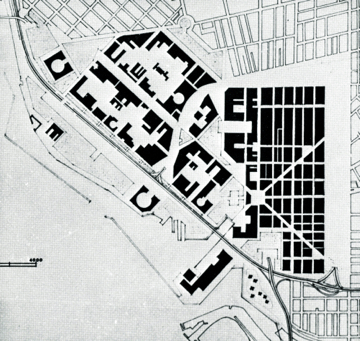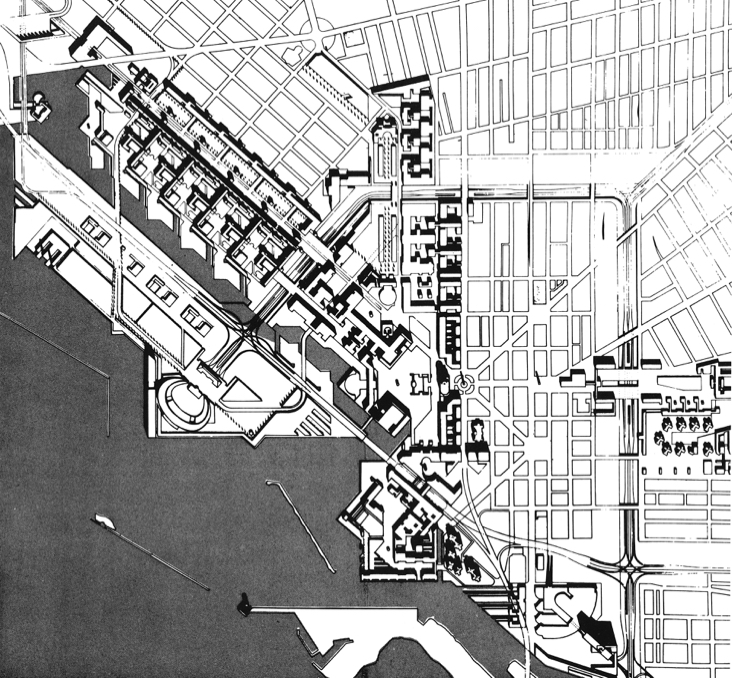Buffalo Waterfront Plan
Buffalo, New York
1
This was not an official project in the office of Werner Seligmann. Rather, it was a class project of the urban design studio taught by legendary Colin Rowe. But circumstances were similar: Seligmann had just been awarded an urban design contract with the City of Binghamton, even though he was still a one-man office with a teenager as his only employee; Rowe had recently come to Cornell and was persuaded to set up a new graduate-level urban design course, although—this according to Rowe, himself—it still lacked any “Rowe influence.”
As close friends and longtime colleagues, and parallel to the emergence of the Binghamton plan, Seligmann influenced the urban design studio to shift from "tinkering with blocks," as in the example below, to seeing the design opportunities inherent in the American "Collision City"—Rowe's term as a precursor to Collage City.
The final version of the Buffalo plan of 1969, during which all participants, including Colin Rowe, developed a new sophistication that was to influence major urban design projects, worldwide, from then on. This was an application of Rowe's "phenomenal transparency"—overlapping readings that both acknowledge and contradict the existing street patterns—at a vast urban scale.
1969


An early design of the Buffalo plan, as it stood before Werner's frequent visits to the UD Studio to share his experience with the development of the Binghamton plan, ongoing since 1967.
1969